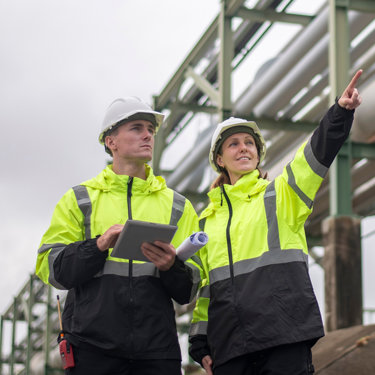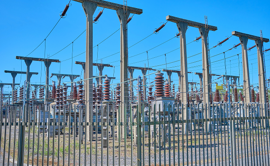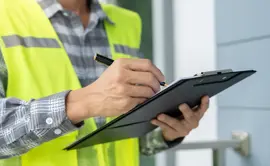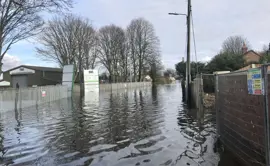From guidance to action: building climate resilience in COMAH sites
Published: 23 October 2025
As climate change continues to intensify, Control of Major Accident Hazards (COMAH) site operators face the growing challenge of how to maintain safety and compliance in the face of increasingly frequent and severe natural hazards.
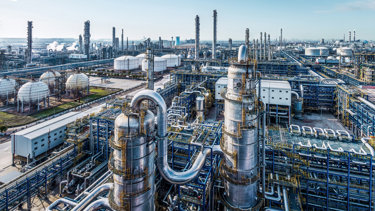
For COMAH site operators, the stakes are particularly high. Subsequently, the Chemical and Downstream Oil Industries Forum (CDOIF) guidance on climate change adaptation offers a comprehensive roadmap for navigating these emerging risks.
What is driving the change?
In 2021, the CDOIF published a guide outlining the extreme weather threats to sites in Great Britain, particularly focusing on natural hazard-triggered technological accidents (Natechs). The guide highlights that flooding is the most common and widespread natural hazard, but other events such as lightning, high winds, extreme heat, ice and snow, and prolonged cold spells can also pose a significant risk.
COMAH sites are particularly vulnerable due to the presence of hazardous substances. Failing to proactively adapt to climate change could result in compliance breaches and major incidents.
Practical actions for COMAH site operators
In addition to the key actions outlined below, COMAH site operators should take five practical steps to protect their people, assets, and reputation.
- Screen for Natech risks using local and national climate data like UKCP18, which is a set of tools and data created by the Meteorological Office in 2018 to provide updated observations and climate change projections out to 2100 in the UK and globally
- Complete site-specific climate change risk assessments to assess current and future threats
- Integrate adaptation measures into existing safety management systems and environmental management systems
- Learn from case studies to build effective and proven mitigation strategies
- Engage with regulators early to ensure alignment with COMAH and the Environmental Permitting Regulations
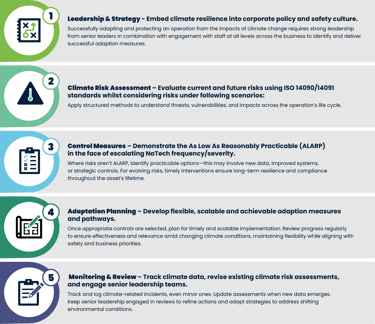
The risk of inaction
Ignoring adaptation doesn’t just leave sites exposed, it introduces operational, financial and reputational vulnerabilities.
Key risks include:
- Compliance failures
- Severe environmental damage
- Operational disruption
- Critical financial loss
- Reputational damage
Conversely, proactive adaptation enhances resilience, protects assets, and demonstrates leadership in sustainability and risk management.
Climate change is not a future problem, it is a current reality. The CDOIF guidance empowers COMAH operators to act decisively, strategically, and compliantly.
Turning guidance into action
Need help implementing the guidance at your site? Our team of climate risk experts can support you with a tailored risk assessment and adaptation planning.
Unlike other consultancies, we have the in-house expertise to design, implement and maintain many climate resilience and adaptation measures. Our end-to-end solution takes advisory insights through to practical engineering and nature-based solutions.
Our solutions can help you to be more prepared, have the correct response plans in place, protect your key assets, minimise damage and have an effective recovery plan to get operating again as soon as possible.
Ready to future-proof your site? Talk to us about climate risk resilience today.
More from our Knowledge Hub
Environmental compliance today, creating a sustainable tomorrow
Helping you reduce risk to the environment and your operation by managing assets compliantly while achieving commercial, ESG, and net-zero goals.
Contact our experts